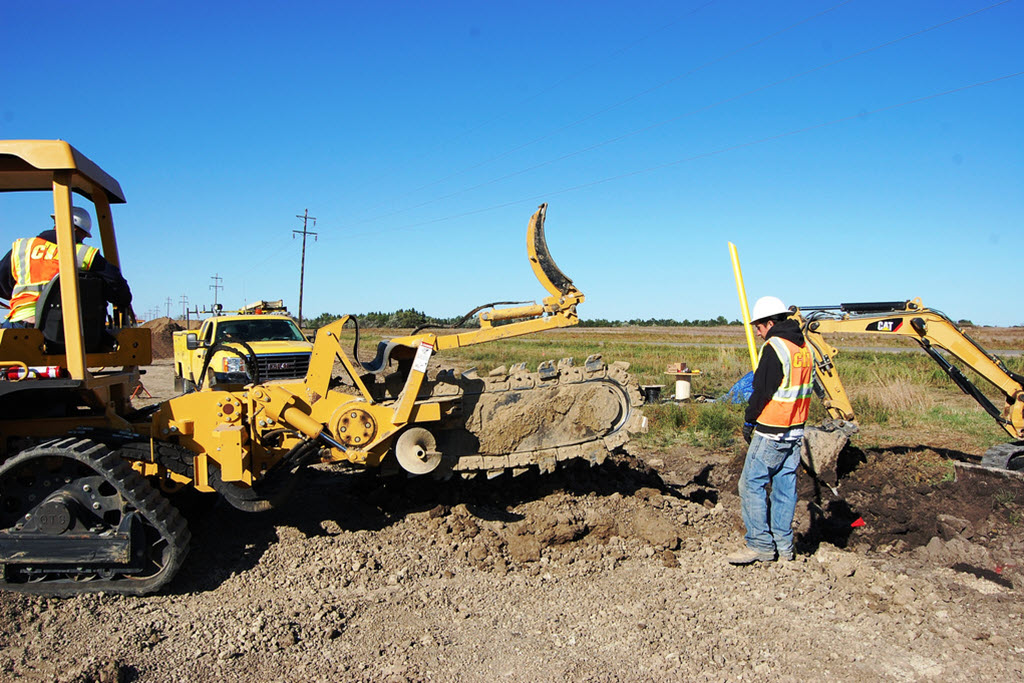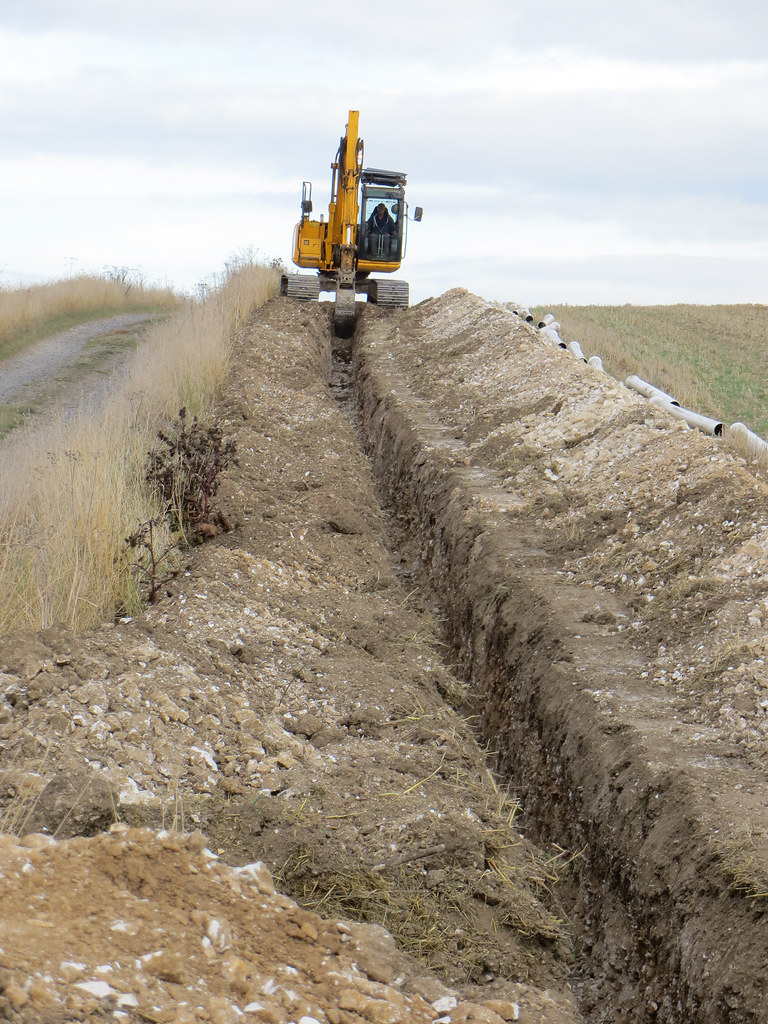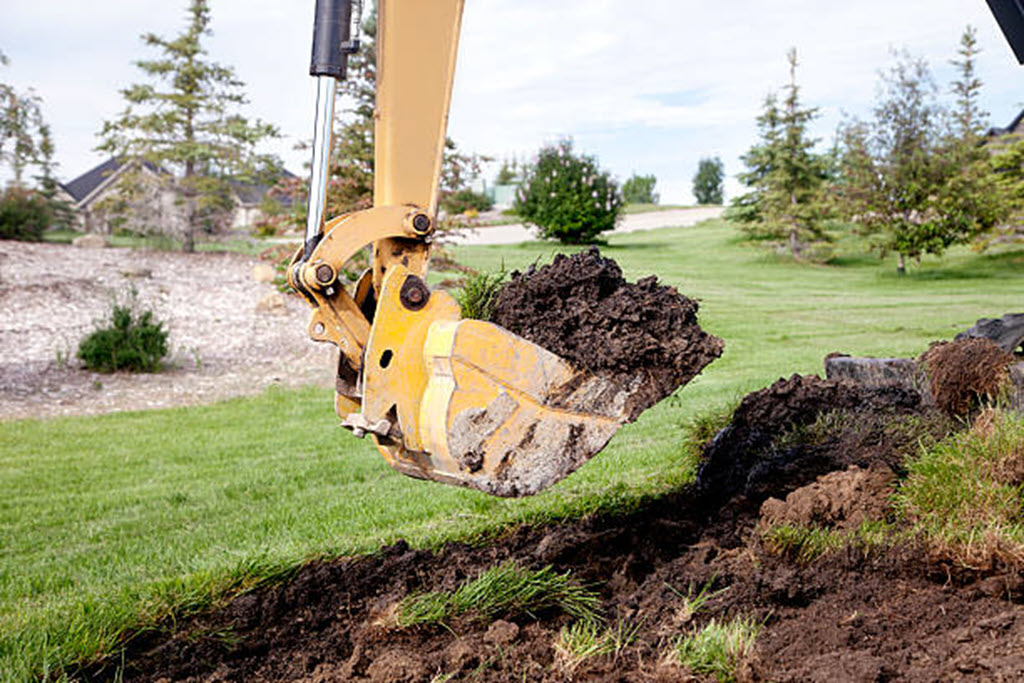Cable Trenchingsin Auburn Hills MI
Cable Trenching Done Right for Secure Utility Installations
We Are Locally Owned & Operated For Over 37 Years
Contact Us Today!
We Serve Businesses In And Around The Following Cities:
About Cable Trenchings
Introduction to Cable Trenching in Auburn Hills
In the rapidly evolving modern commercial landscape of Auburn Hills, it’s crucial to have robust infrastructure systems in place. A key part of this infrastructure is cable trenching, designed to provide a safe passageway for cables and wiring underneath the ground. Businesses in Auburn Hills—whether they’re newly constructed entities or established companies looking to upgrade their systems—can greatly benefit from understanding and utilizing this service. The right trenching contractor can make all the difference, implementing reliable cable trenching to facilitate seamless utility line functioning.
The Essence of Cable Trenching in Commercial Properties
Cable trenching is the process of digging precise, utility-friendly trenches in the ground to run utility lines, including electrical, gas, and telecommunications cabling. Achieving the correct depth, width, and length for the cable trench, a trenching contractor creates a secure environment for utility cables to function without risk of damage or interference. This process demands the technical expertise and specialized equipment provided by reliable trenching companies. Equipped with extensive training and appropriate excavation tools, these contractors ensure that cable trenches meet the utility line trenching requirements of different businesses.
Distinguishing Features of Cable Trenching
Features like depth and width differentiation, protective measures for cables, and the possibility of including multiple utilities in one trench make cable trenching a versatile solution for commercial properties. Depending on the specific utility lines, a trench may range from a few inches deep to several feet. The trenching and boring contractors have the skills to determine the appropriate dimensions based on regulatory stipulations and safety considerations.
In many cases, the commercial sector opts for trenching for utilities as it accommodates various utility lines in one trench, making it a cost-efficient solution. Furthermore, with the right trench digging service, various methods such as open cut trenching or micro trenching can be employed based on the project’s needs and landscape requirements.
The Undeniable Benefits of Cable Trenching
Investing in cable trenching has demonstrable benefits. The first and most crucial is safety. By securely housing utility lines underground, trenching reduces the risk of accidents and equipment damage. Efficiency is another notable benefit. With numerous utility lines operating in close proximity, business operations can run smoothly without fear of utilities colliding or affecting each other.
Aesthetics also come into play. By embedding utility lines underground, businesses can maintain a clean, clutter-free landscape—appealing not only to the organization itself but also to potential clients and customers. Furthermore, during harsh weather conditions common in Auburn Hills, buried cable lines stand a much better chance of remaining unaffected, ensuring continuous, reliable service.
Real-World Application: D&J Contracting
Real-world examples of cable trenching success in Auburn Hills abound. A notable example is D&J Contracting, a trenching contractor with vast experience in cable trenching. They’ve helped companies across the city lay down their utility lines securely and efficiently, regardless of size, dimensions, or project complexity. For instance, D&J Contracting once trenching for a propane line and electrical cables in one go, maintaining the safety standards as well as cost-effectiveness for the client. Their work is testimony of how a dedicated trenching excavation company can ensure successful cable trenching execution.
Choosing the Right Trenching Service Provider
Selecting the right trenching services near you is vital to successful cable trenching. A provider like D&J Contracting not only guarantees quality service but also the assurance of effective problem-solving expertise. They understand the landscape of Auburn Hills, providing localized solutions while integrating innovative trenching techniques to maximize results. D&J Contracting’s trench digger contractors bring industry knowledge, commitment to safety, and attention to detail in every project, making them an excellent choice for commercial entities in Auburn Hills.
To Conclude: Embrace the Power of Cable Trenching
As we have seen, cable trenching is an integral part of developing efficient business operations in Auburn Hills. The process safeguards utility line integrity, promotes efficiency, enhances aesthetic appeal, and ensures service continuity during adverse weather. With the right expertise, as offered by trench digging contractors like those at D&J Contracting, commercial entities can reap these benefits and more. Choose with insight, select with discernment, and make your cable trenching investment count. Your business stands to achieve exceptional results in functionality and utility through this well-executed process.
Cable Trenchings Gallery


Call Us Today to receive your Free Quote for
Cable Trenching in Auburn Hills
Serving: Auburn Hills, Michigan

About Auburn Hills, Michigan
In 1908, automobile pioneer John Dodge bought a farmhouse 3 miles (4.8 km) northeast of Auburn Heights to use as his country retreat. His oldest child, Winifred Dodge, married real estate baron Wesson Seyburn, who built his own country retreat 2.5 miles (4.0 km) north of Auburn Heights. The estate included hunting land, dog kennels, a swimming pool, horse stables, and a 5,000-square-foot (460 m) Colonial Revival house. Pontiac Township purchased the estate in 1976, and adapted the buildings for government use. Today, it is known as the Auburn Hills Civic Center.
The first use of the name “Auburn Hills,” in 1964, was by Oakland Community College. They named their campus (a former Nike missile base) at Featherstone and Squirrel roads for the town and the hilly terrain in the area. Besides Oakland Community College, three other colleges, Oakland University, Baker College, and Western Michigan University Thomas M. Cooley Law School have campuses partially within the city limits.
Auburn Hills began as Pontiac Township, including the village of Auburn, in 1821, at what is today the corner of Auburn and Squirrel roads. Situated on the Clinton River, it was named by Aaron Webster, the first settler, for Auburn, New York. His sawmill and grist mill attracted settlers to Auburn. After the streets were laid out in 1826, Auburn rivaled nearby Pontiac until the 1860s, when it lost its own prosperity. The town was renamed Amy in 1880, and it officially became Auburn Heights in 1919. Pontiac Township bordered the city of Pontiac on two sides. The township attempted to incorporate as Pontiac Heights in 1971, but was denied by state officials. Pontiac Township became a charter township in 1978, to protect itself from further annexation. In 1983, Pontiac Township merged with the village of Auburn Heights to become the City of Auburn Hills. It is not to be confused with the similarly named city of Auburn, Michigan, that exists in Bay County, near Saginaw Bay.
According to the United States Census Bureau, the city has a total area of 16.64 square miles (43.10 km), of which 16.60 square miles (42.99 km) is land and 0.04 square miles (0.10 km) (0.24%) is water.
| Census | Pop. | Note | %± |
|---|---|---|---|
| 1880 | 111 | — | |
| 1990 | 17,076 | — | |
| 2000 | 19,837 | 16.2% | |
| 2010 | 21,412 | 7.9% | |
| 2020 | 24,360 | 13.8% | |
| U.S. Decennial Census | |||
As of the census of 2010, there were 21,412 people, 8,844 households, and 4,923 families living in the city. The population density was 1,289.9 inhabitants per square mile (498.0/km). There were 9,965 housing units at an average density of 600.3 per square mile (231.8/km). The racial makeup of the city was 66.3% White, 18.5% African American, 0.3% Native American, 8.9% Asian, 2.7% from other races, and 3.4% from two or more races. Hispanic or Latino of any race were 7.8% of the population.
There were 8,844 households, of which 27.0% had children under the age of 18 living with them, 38.8% were married couples living together, 12.4% had a female householder with no husband present, 4.5% had a male householder with no wife present, and 44.3% were non-families. 33.5% of all households were made up of individuals, and 7.3% had someone living alone who was 65 years of age or older. The average household size was 2.24 and the average family size was 2.90.
The median age in the city was 31.4 years. 19.4% of residents were under the age of 18; 17.8% were between the ages of 18 and 24; 31.9% were from 25 to 44; 21.6% were from 45 to 64; and 9.4% were 65 years of age or older. The gender makeup of the city was 48.4% female and 51.6% male.
As of the census of 2000, there were 19,837 people, 8,064 households, and 4,604 families living in the city. The population density was 1,194.5 inhabitants per square mile (461.2/km). There were 8,822 housing units at an average density of 531.2 per square mile (205.1/km). The racial makeup of the city was 75.92% White, 13.22% African American, 0.32% Native American, 6.33% Asian, 0.04% Pacific Islander, 1.56% from other races, and 2.61% from two or more races. Hispanic or Latino of any race were 4.50% of the population.
There were 8,064 households, out of which 26.7% had children under the age of 18 living with them; 43.0% were married couples living together; 10.5% had a female householder with no husband present and 42.9% were non-families. 33.1% of all households were made up of individuals, and 6.0% had someone living alone who was 65 years of age or older. The average household size was 2.25 and the average family size was 2.92.
The age distribution is 20.4% under the age of 18, 15.9% from 18 to 24, 38.1% from 25 to 44, 18.2% from 45 to 64, and 7.3% who were 65 years of age or older. The median age was 31 years. For every 100 females, there were 98.3 males. For every 100 females age 18 and over, there were 97.5 males.
The median income for a household in the city was $51,376, and the median income for a family was $60,849. Males had a median income of $45,686 versus $34,015 for females. The per capita income for the city was $25,529. About 3.9% of families and 6.3% of the population were below the poverty line, including 6.4% of those under age 18 and 4.4% of those age 66 or over.
School districts serving sections of Auburn Hills include Avondale School District, Pontiac School District, and Rochester Community Schools.
The Avondale School District operates two elementary schools in the city limits: R. Grant Graham Elementary School and Auburn Elementary School. Portions of Auburn Hills in ASD are zoned to these schools. All ASD residents are zoned to Avondale Middle School in Rochester Hills and Avondale High School in Auburn Hills. Other ASD facilities in Auburn Hills include the district administrative offices and Avondale Montessori. A Pontiac school district school, Will Rogers Elementary School, is located in northeastern Auburn Hills.
Private schools in Auburn Hills include:
- Auburn Hills Christian School
- Oakland Christian School
Private schools near Auburn Hills:
- Notre Dame Preparatory/Marist Academy, Pontiac
- Holy Family Regional School (HFRS) – Consists of a grade PK-3 North Campus in Rochester and a 4-8 South Campus in Rochester Hills. Two churches in Auburn Hills designate HFRS as the parish school: St. John Fisher Chapel and Sacred Heart of the Hills. The first two sponsored the school from the beginning and the other three joined later, with Sacred Heart being the final one.
The main campus of Oakland University sits within Auburn Hills. Oakland Community College, Baker College, and Western Michigan University Thomas M. Cooley Law School are also situated in Auburn Hills.
Call Us Today to receive your Free Quote for
Cable Trenching in Auburn Hills
Related Services in Auburn Hills, Michigan
We Serve Businesses In The Following Zip Codes:
48007, 48015, 48021, 48026, 48035, 48036, 48038, 48042, 48043, 48044, 48045, 48046, 48047, 48048, 48050, 48051, 48066, 48071, 48080, 48081, 48082, 48083, 48084, 48085, 48088, 48089, 48090, 48091, 48092, 48093, 48098, 48099, 48225, 48230, 48236, 48310, 48311, 48312, 48313, 48314, 48315, 48316, 48317, 48318, 48397